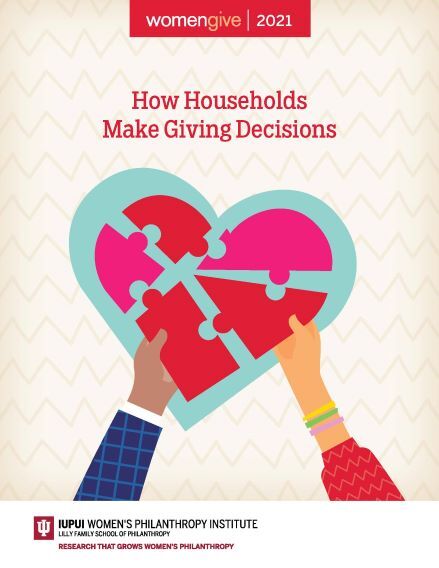What is this Report?
The report looks at how charitable decisions get made in the household alongside other financial decisions. The study also includes LGBTQ+ individuals and same-sex couples. The study uses prior Women Philanthropy Institute’s survey on U.S. household charitable decision-making. WPI surveyed 3,449 people in mid-May 2020 looking age, income, race, region, ethnicity, marriage or cohabitating, different household arrangements—nuclear families and multi-generational. The survey focused on donations in 2019.
What are the key findings from the article?
- 6 out of 10 couples make decisions jointly (61.5%). If one person makes decisions, it tends to be more likely to be the woman (15.3% compared to 12.1%). Compared to the 2005 survey, the percentage of separately deciding and joint deciding households has gone down while women deciding went up by 8.8% and men deciding went up by 8.2%.
- However high-net households reported a bit differently. “In 2018, 49.9% of high-net-worth households made giving decisions jointly, 25.3% separately, 19.3%with the man deciding, and 5.6% with the woman deciding.” Prior surveys suggest that women have been playing an increasing role in these decisions over the past few decades.
- Households view charitable giving more akin to short term decision-making. The study found “Overall, women are more likely to decide about day-to-day household expenses and management, whereas men are more likely to decide about larger purchases or longer-term financial management.”
- Demographics of age, education, children in the household make a difference. Older households and households with children under the age of 18 tend to make decisions together while younger households and households without children under the age of 18 tend to have men giving alone. Education gap in the household meant that the person with the higher education tended to make the decisions, gender aside.
- However, households where the man makes the decisions give more while households where couples give separately give the least. Couples who give together tend to give 3.4% of their household income compared to 2.9% if one person decides by themselves.
- Most households have agreement on giving; 74.6% of couples agree to the amount and 77.5% agree on giving. However, 1 in 7 disagree on where and how much to give to charity.
What can I do as a result?
- Ask your donors how they make decisions in their home. Don’t assume decisions are made by the man of the household. Talk to the women! Remember MacKenzie Scott announced nearly $6 million in grants and gifts in 2020.
- Demographics of households have been changing over decades. Women are increasing in number as sole decision-makers. As the next few years and decades continue, the percentage of women-decision-makers may continue to rise. Taken in conjunction with recent studies on giving circles, data suggests women will be key decision-makers for philanthropy in the years to come.
- Make your communications relevant for everyone. Don’t just show images of white men in your materials. Since the landscape of who is giving has changed, it’s important that the materials on your website, direct mail, social media reflect that new reality since who gives is becoming more complex.
Additional Resources
- How Households Make Giving Decisions | Lily Family School of Philanthropy – Women Gives 2021
- The Landscape of Giving Circles/ Collecting Giving Groups in the US | Collective Giving Research Group 2016
- MacKenzie Scott, a Philanthropist and Ex-Wife of Jeff Bezos, Remarries | NYTimes How Women Are Changing the Philanthropy Game | NYT 2021
- There are no major donors! And other surprising insights from Penelope Burk | Prospect Research Institute 2019
- Gender Matters: A Guide to Growing Women’s Philanthropy | CASE Kathleen E. Loehr


1 thought on “Women Gives: How Households Make Giving Decisions 2021”